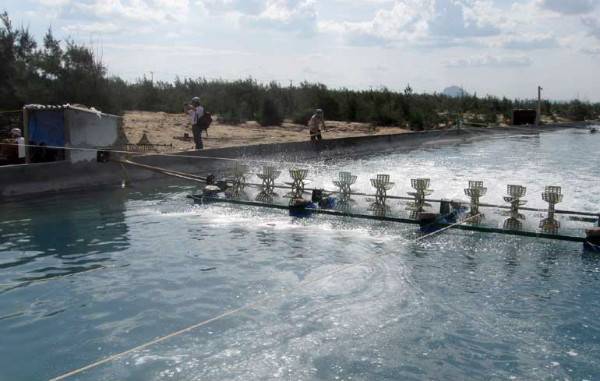[ad_1]

One hectare of shrimp farming area produces 8 tons of solid waste
Phu Hai hamlet in Thua Thien-Hue province became a ‘hot spot’ after local newspapers reported that 1.9 hectares of land under control of the district’s Military Command were allocated to two households for shrimp farms.
The waste water from the households’ shrimp ponds goes directly into the sea, poisoning the environment and spoiling the landscape in Chan May – Lang Co, a famous destination for tourists.
In June 2017, the local authorities discovered 20 shrimp hatchery ponds located on land not reserved for aquaculture. The shrimp farms were fined for discharging untreated waste water to the sea.
However, illegal shrimp farming in Chan May – Lang Co remains a ‘hot business’.
|
In Hoai Nhon and Binh Dinh in the central region, waste water from shrimp ponds is untreated. The canals, lakes and ponds in the communes of Hoai My and Hoa Hai are polluted as they are near shrimp ponds. |
In Hoai Nhon and Binh Dinh in the central region, waste water from shrimp ponds is untreated. The canals, lakes and ponds in the communes of Hoai My and Hoa Hai are polluted as they are near shrimp ponds.
The 18 hectare shrimp farming area in Cong Luong hamlet has many shrimp ponds, each of which follows a specific farming process and none observes the waste water treatment process.
The unprogrammed shrimp farming on sand in Kim Giao Thien hamlet of Hoai Hai commune has also caused serious consequences.
As there is no standard waste water treatment system, the saltwater and waste water have been absorbed into the underground water. As a result, locals cannot use underground water for daily life.
The same situation can be seen at Van Phong Bay of Khanh Hoa province, known as one of the first localities in the central region farming shrimp on sand.
Local farmers pump underground water into shrimp ponds which need thousands of cubic meters of water.
Under current laws, the waste water from industrial farming units must go through a filtering pond before reaching the environment. However, farmers all ignore the regulation.
They also ignore the call for using bioproducts in farming and treating waste. The food left over and the excretion of shrimp are the main elements that create pollutants.
It is estimated that only 85 percent of feed used by farmers in shrimp ponds is consumed. One hectare of shrimp farming area produces 8 tons of solid waste and tens of cubic meters of waste water.
RELATED NEWS
Monitoring system allows farming of shrimp in all weather conditions
Kim Chi
[ad_2]
Source link
